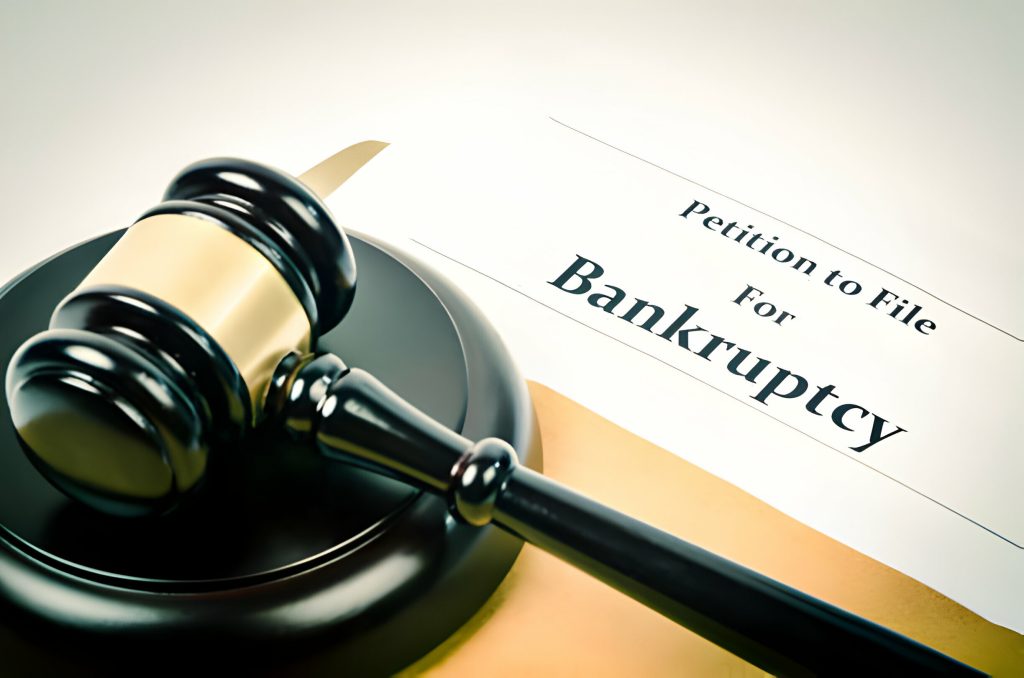Did you know that there are 94 federal bankruptcy courts in the United States? That’s where most bankruptcy cases are handled. If you ever find yourself facing financial difficulties and considering bankruptcy, it’s important to understand how this process works. In this article, we’ll explore the bankruptcy court system and its procedures, the different types of bankruptcy, and the impact it can have on your credit and assets. So, let’s dive in and learn more about where most bankruptcy cases are handled.
Bankruptcy Court System
Bankruptcy courts are specialized courts that handle bankruptcy cases and are part of the federal court system in the United States. These courts have jurisdiction over all bankruptcy matters, including Chapter 7 liquidation, Chapter 11 reorganization, and Chapter 13 repayment plans. Bankruptcy court judges, who are appointed by the United States Court of Appeals, preside over these cases and make decisions based on bankruptcy laws and court rules. Individuals or businesses file their bankruptcy petitions and other necessary documents with the bankruptcy court clerk’s office. The court follows specific rules and procedures outlined in the Federal Rules of Bankruptcy Procedure. Bankruptcy court proceedings can be accessed by the public either at the clerk’s office or through PACER, a system providing online access to case information and filings.
Bankruptcy Courts in the United States
The United States has 94 federal bankruptcy courts that handle various types of bankruptcy filings. These courts are located throughout the country, ensuring accessibility for individuals and businesses seeking bankruptcy relief. Here are some key points about bankruptcy courts:
- Bankruptcy court locations: The 94 federal bankruptcy courts are spread across the United States, serving different geographical areas.
- Bankruptcy court judges: Each bankruptcy court is presided over by a bankruptcy judge who is responsible for overseeing and deciding on bankruptcy cases.
- Bankruptcy case administration: Bankruptcy courts handle the administration of bankruptcy cases, including processing filings, scheduling hearings, and managing communication with creditors.
- Bankruptcy court rules: Bankruptcy courts have their own set of rules and procedures that govern how cases are handled and resolved.
- Bankruptcy court jurisdiction: These courts have jurisdiction over all matters related to bankruptcies filed under the U.S. Bankruptcy Code.
Overall, these federal bankruptcy courts play a crucial role in providing individuals and businesses with a legal framework to navigate financial difficulties and obtain debt relief.
Bankruptcy Court Procedures and Operations
When accessing bankruptcy court proceedings, you can view public documents filed in connection with a case through PACER or at the bankruptcy clerk’s office. Bankruptcy court filings are an important part of the bankruptcy process, and understanding the procedures and operations of the court is crucial. The table below provides an overview of key aspects related to bankruptcy court proceedings:
| Topic | Description |
|---|---|
| Bankruptcy Court Hearings | Court hearings where parties present arguments and evidence related to a bankruptcy case. |
| Bankruptcy Court Rules | Rules established by the bankruptcy court that govern how cases are handled and procedures followed. |
| Bankruptcy Court Judges | Judges appointed by the United States Court of Appeals who oversee bankruptcy cases and make decisions. |
| Bankruptcy Court Proceedings | The overall process of handling a bankruptcy case, including hearings, filings, and decision-making. |
Understanding these elements will help you navigate the bankruptcy court system effectively and ensure that your rights are protected throughout the proceedings.
Types of Bankruptcy
Chapter 7 bankruptcy allows you, as an individual or business, to discharge the majority of your debts through liquidation. To better understand this type of bankruptcy, consider the following key points:
- Filing Requirements: Before filing for Chapter 7 bankruptcy, you must meet certain eligibility criteria, such as passing the means test and completing credit counseling.
- Dischargeable Debts: Under Chapter 7, many types of debts can be discharged, including credit card debt, medical bills, and personal loans. However, some debts like child support and student loans are not dischargeable.
- Repayment Plan Options: Unlike other chapters of bankruptcy that involve repayment plans, Chapter 7 focuses on liquidating assets to pay off creditors. Any remaining eligible debts are then discharged.
- Bankruptcy Exemptions: Certain assets may be exempt from liquidation based on state and federal laws. These exemptions protect essential items like a primary residence or necessary personal property.
Remember to consult with a qualified bankruptcy attorney to fully understand how Chapter 7 bankruptcy applies to your specific situation.
Impact of Bankruptcy on Credit and Assets
Filing for bankruptcy can negatively impact your credit score and ability to obtain credit in the future. It’s important to understand the long-term consequences of bankruptcy on your credit and assets. While bankruptcy can provide a financial fresh start, it may result in the liquidation of assets to repay creditors. However, certain assets may be exempt from liquidation depending on bankruptcy laws. Rebuilding your credit after bankruptcy is possible but may take time and effort. One way to start rebuilding your credit is by obtaining a secured credit card or a small loan with manageable payments. Making timely payments and keeping your balances low can help improve your credit over time. It’s crucial to carefully manage your finances post-bankruptcy and make responsible financial decisions moving forward.
| Keyword | Description |
|---|---|
| Rebuilding Credit | After bankruptcy, it takes time and effort to rebuild your credit. |
| Exempt Assets | Certain assets may be exempt from liquidation during bankruptcy proceedings depending on the laws in place in your jurisdiction. |
| Long-Term Consequences | Bankruptcy can have long-lasting effects on your financial situation, so it’s essential to understand its long-term consequences. |
| Obtaining Credit | Filing for bankruptcy can make it challenging to obtain new lines of credit or loans in the future. |
| Financial Fresh Start | Bankruptcy provides individuals with a chance for a fresh start financially, but it requires responsible financial management going forward. |
Bankruptcy Statistics and Trends
Bankruptcy statistics reveal the impact of economic factors on personal and business bankruptcies. Understanding bankruptcy filing trends can provide valuable insights into the financial health of individuals and companies. Here are some key points to consider:
- Economic factors play a significant role in bankruptcy rates. During times of economic downturns, personal bankruptcies tend to be more common as individuals struggle with unemployment and financial difficulties.
- Businesses may also file for bankruptcy due to financial challenges or shifts in the market. Analyzing bankruptcy statistics can help identify industries or sectors that are particularly vulnerable.
- Bankruptcy statistics analysis is crucial for conducting thorough financial health assessments. It allows researchers and policymakers to examine trends over time and evaluate the effectiveness of bankruptcy laws and regulations.
- By studying bankruptcy filing trends, experts can gain a better understanding of the broader economic landscape and make informed decisions regarding fiscal policies.
Overall, bankruptcy statistics provide valuable information for conducting comprehensive financial health analyses and understanding the impact of economic factors on personal and business bankruptcies.
Accessing Bankruptcy Records
Now let’s talk about accessing bankruptcy records. If you’re interested in finding information about bankruptcy cases, there are a couple of ways to do it. One option is to use PACER, which stands for Public Access to Court Electronic Records. PACER allows you to view and download documents filed in connection with bankruptcy cases. Another way to access these records is by visiting the bankruptcy clerk’s office directly.
When it comes to recording court proceedings, most bankruptcy judges now use digital audio recording as the official method. This means that instead of having a court reporter taking notes during the hearing, the proceedings are recorded digitally for future reference.
Additionally, as part of the bankruptcy filing process, meetings of creditors are required in all cases, regardless of the chapter under which they were filed. These meetings provide an opportunity for creditors and the debtor(s) to discuss the case and any potential resolutions.
Bankruptcy Appeals and Appellate Process
If you’re considering appealing a bankruptcy court decision, it’s important to understand the appellate process and the steps involved. Here are some key points to keep in mind:
- Appealing bankruptcy decisions: When you disagree with a bankruptcy court ruling, you have the right to challenge it by filing an appeal.
- Bankruptcy appellate process: Appeals from bankruptcy court decisions are typically heard by district courts or bankruptcy appellate panels.
- Challenging bankruptcy rulings: The purpose of an appeal is to contest the bankruptcy judge’s ruling and seek a different outcome.
- Reviewing bankruptcy court judgments: During the appeal, the higher court will review the lower court’s judgment and consider legal arguments presented by both parties.
Understanding these aspects of the appellate process can help you navigate through challenging a bankruptcy court order effectively.
Journalist’s Guide to Reporting on Bankruptcy Cases
When reporting on bankruptcy cases, it’s important for journalists to familiarize themselves with the Journalist’s Guide to the Federal Courts, which provides essential information and resources for accurate and comprehensive coverage. Reporting on bankruptcy cases presents several challenges, including understanding complex bankruptcy laws and procedures. Journalists must navigate ethical considerations when reporting on personal financial struggles and potentially sensitive information. Access to accurate and timely information is crucial, as media access in bankruptcy courts may be limited compared to other court proceedings. However, it is in the public interest to report on bankruptcy cases, as they highlight issues related to financial stability and economic trends. By adhering to ethical standards and seeking out reliable sources of information, journalists can provide valuable insight into the impact of bankruptcy laws on individuals and businesses.
Examples of Bankruptcy Court Cases and Their Implications
To gain a deeper understanding of bankruptcy court cases and their implications, you can explore real-life examples such as FTX Trading Ltd. and Lehman Brothers Holdings Inc., which demonstrate the intervention of bankruptcy court when companies are unable to satisfy all creditors.
- Bankruptcy court precedents: These cases set legal standards and guidelines for future bankruptcy proceedings.
- Bankruptcy court jurisdiction: The court has authority over bankruptcy cases, ensuring fair resolution for all parties involved.
- Bankruptcy court timelines: The court establishes deadlines and timelines to expedite the resolution of bankruptcy cases.
- Bankruptcy court exemptions: Certain assets may be exempt from liquidation or seizure during bankruptcy proceedings.
- Bankruptcy court challenges: Parties involved in a bankruptcy case may contest decisions made by the court, leading to further legal proceedings.





